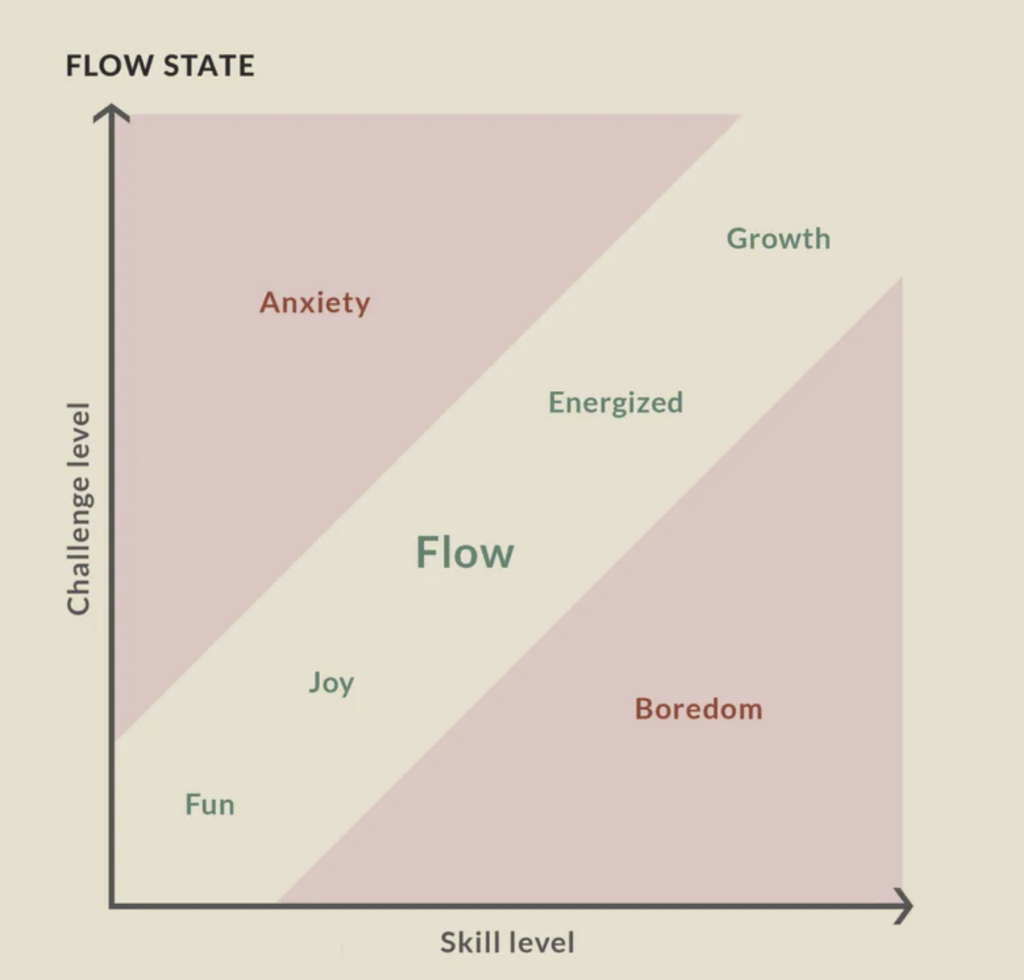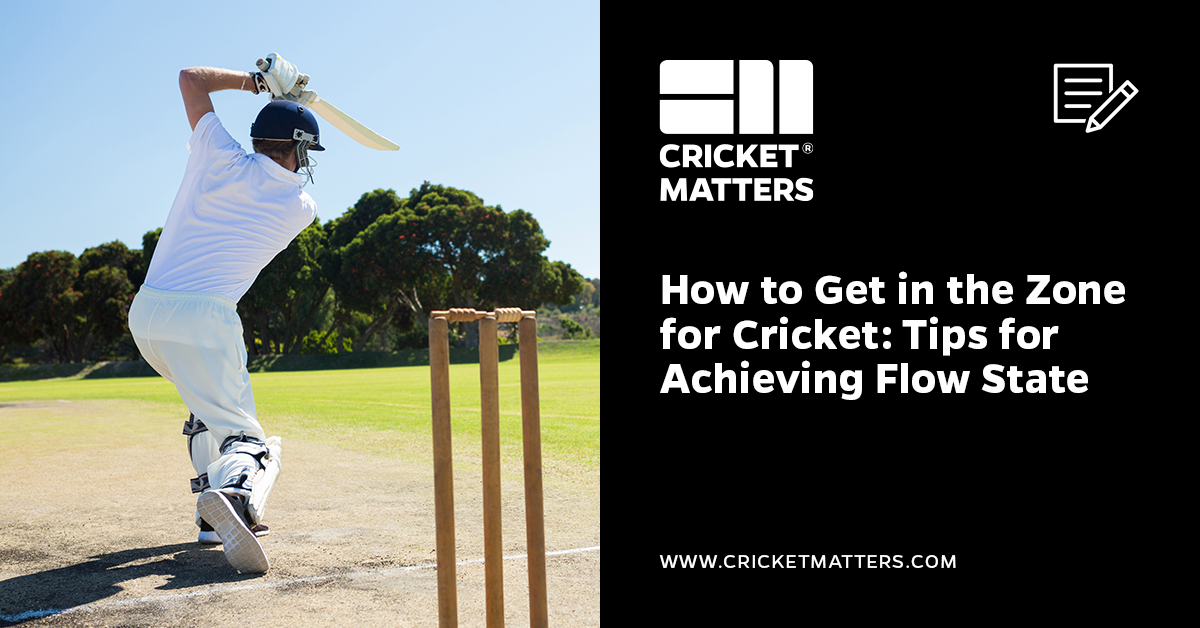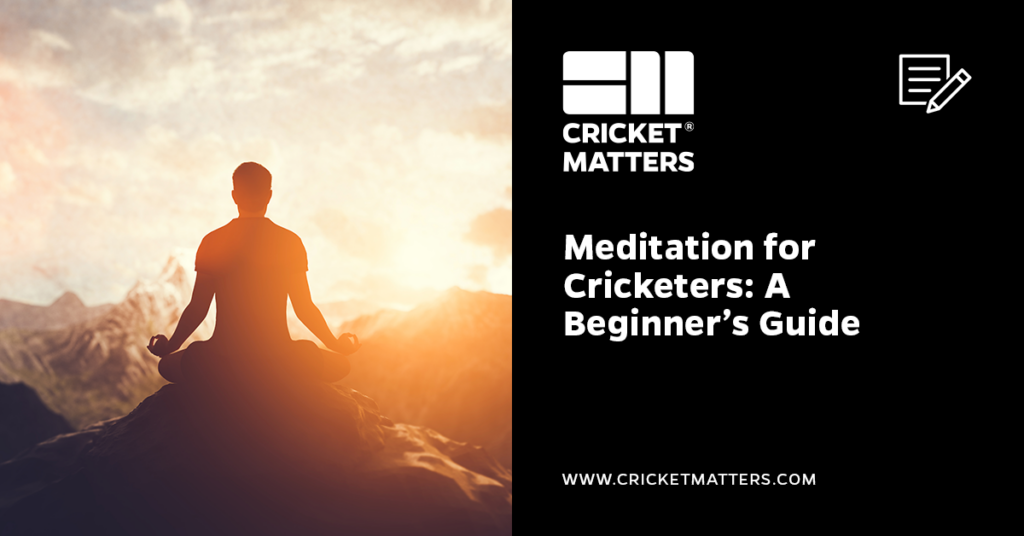
I hope you enjoy reading this blog post.
James Breese, Cricket Matters FounderIf you need my help with cricket coaching, strength and conditioning, injury rehab, or nutrition, click here.
Think back to when you last scored a hundred. Or even took five wickets in a game.
What do you remember? How would you describe it?
Or were you just in the zone?
Every shot you played and each ball you bowled flows seamlessly from one to the next; there’s only you and the game.
Time seems to stretch and contract with each ball played.
Your senses sharpen, your decisions come instinctively, and your connection with the pitch feels almost spiritual.
You feel alive, connected, powerful and in tune with your surroundings.
This is flow.
Like elite athletes in various sports, cricketers can get into this heightened feeling of being in the zone more regularly by following a proven process.
Flow isn’t reserved for professionals; it’s accessible to all club cricketers and transforms how they play the game.
Whether scoring a century or securing a five-wicket haul, the characteristics of flow remain the same: complete absorption in the activity, a sense of mastery, and a melding of action and awareness.
Let’s learn more about it and how to apply it to score more runs and take more wickets.
Table of Contents
Introduction to the Flow State

What is Flow State?
Flow state, a concept developed by psychologist Mihaly Csikszentmihalyi, describes a psychological state of deep focus and immersion in activities.
This state is marked by a profound engagement where individuals experience heightened performance and enjoyment.
The characteristics of flow include intense concentration, a merging of action and awareness, a loss of self-consciousness, and a sense of control over the task at hand.
In Csikszentmihalyi’s own words, flow is:
A state in which people are so involved in an activity that nothing else seems to matter; the experience is so enjoyable that people will continue to do it even at great cost, for the sheer sake of doing it.
The Importance of a Flow State in Cricket
In cricket, achieving a flow state or getting in the zone is crucial for performing at your best.
Players in a flow state often perform with seemingly effortless skill, maintaining complete focus despite external pressures and distractions.
This heightened state can lead to extraordinary performances comparable to those in other sports, where athletes like Michael Jordan or Roger Federer have delivered incredible performances under pressure.
Or, more recently, Glenn Maxwell’s incredible ODI knock in the 2023 World Cup.
The epitome of being in the zone, if you ask me:
Understanding and cultivating flow can significantly enhance a cricketer’s ability to perform consistently at their best.
It can help quiet the mind, a problem many cricketers who overcomplicate the game face.
The impact of the flow state cannot be ignored as it highlights its benefits for individual sporting performance and underscores the universal nature of this psychological phenomenon across different sports and activities.
Understanding the Principles of Flow by Csikszentmihalyi
Before diving into the eight characteristics of flow, you may want to watch this short video with a great explanation of what flow is:
The 8 Characteristics of Flow
Flow is characterized by eight distinctive signs identified by Mihaly Csikszentmihalyi:
- Complete concentration on the task
- Clarity of goals and immediate feedback
- Transformation of time (speeding up or slowing down)
- The experience is intrinsically rewarding
- Effortlessness and ease
- Balance between challenge and skills
- Actions and awareness are merged, losing self-conscious rumination
- A feeling of control over the task
These elements combine to create a state where personal performance and creativity are maximised, leading to deep satisfaction in the activity.
How These Principles Apply to Cricket
In cricket, these principles of flow translate into practical aspects of the game:
- Complete concentration and clarity of goals allow batsmen to focus intensely on each delivery and understand their role in a match situation.
- Immediate feedback is evident as players adjust their techniques based on the outcomes of their actions, such as pitching the ball fuller on a low-bouncing pitch or batsmen playing predominantly front foot on the same type of pitch to counteract the low bounce.
- Players can experience the transformation of time, describing feeling ‘in the zone’, where hours seem to pass by in moments.
- Intrinsic rewards come from personal achievements (the 50s, 100s, five wickets) and team wins, fuelling a cricketer’s motivation to be a match-winner.
- The balance of challenge and skills is crucial, especially in matching a batsman against an equally skilled bowler. There’s no point in matching an 11-year-old bowler vs. Virat Kohli.
- Merging of actions and awareness is seen when players react instinctively, such as a fielder making a split-second decision to dive and catch a screamer.
- Control is felt when players feel they can impact the game regardless of external conditions.
These flow, get-in-the-zone principles enable cricketers to perform at their best, similar to incredible performances observed in other sports, where athletes enter flow states.
This understanding can help coaches and players foster conditions conducive to flow in training and matches.

Have You Downloaded Our FREE 7-Day Gym Workout Plan?
Grab your complete step-by-step 7-day gym workout plan for cricketers today. There will be no more Guesswork. Just follow the plan and get results.
What Happens in the Brain During Flow?

Research into the neuropsychology of flow states, particularly by Arne Dietrich, has revealed that flow involves reduced activity in the prefrontal cortex, the brain region responsible for complex cognitive functions such as self-awareness, memory, and decision-making.
This reduction, known as transient hypofrontality, likely facilitates the typical experiences of time distortion and diminished self-consciousness associated with flow.
Furthermore, it allows the subconscious to become more dominant, enhancing creativity.
Other studies suggest that flow might activate the brain’s dopamine pathways, intensifying curiosity and motivational states during this peak experience.
What is clear, though, is that the research is still ongoing, and there’s a lot to learn.
How to Achieve the Flow State in Cricket

You can’t experience flow if distractions disrupt the experience.
Thus, to experience this state, one must avoid the attention robbers typical of a cricket match—think sledging, crowd noises, etc. Even your self-doubt.
The first step is to find a way to silence these elements and quieten the mind.
Also, the balance of perceived challenges and skills is essential for flow (Nakamura et al., 2009).
A simple example of this is a player playing out of their depth.
On the one hand, when a challenge is bigger than one’s level of skills, one becomes anxious and stressed.
Think of a Division 9 batsman facing Joffra Archer at 90mph.
On the other hand, when the skill level exceeds the size of the challenge, one becomes bored and distracted.
Think of Virat Kohli playing midweek park cricket with your regular office colleagues.
Since the experience of this state is just in the middle, the balance is essential.
Inducing flow is about the balance between the level of skill and the size of the challenge at hand
(Nakamura et al., 2009).
Experiencing flow during cricket practice and games is essential for a player’s creativity and well-being, and it is a crucial aspect of eudaimonia or self-actualization.
This state is inherently rewarding, and regular practice of entering flow enhances a player’s skill and deepens their enjoyment and satisfaction with the game.
As cricketers frequently engage in flow, they find themselves more connected and content with their performance, contributing to a fully engaged and fulfilling life, sometimes inside and outside of cricket.
Further Reading
What Motivates Your Flow State?

Motivation, essential for any conscious action, comes in two types: intrinsic and extrinsic.
In cricket, intrinsic motivation can be seen in players who are deeply passionate about the game and find immense satisfaction in practising and mastering their skills, whether batting, bowling, or fielding.
This might manifest as a batsman who feels completely absorbed while facing a series of deliveries, enjoying each ball for its challenge, or a bowler who delights in perfecting their spin or pace purely for the personal achievement and joy it brings.
Conversely, extrinsic motivation in cricket might include playing primarily for fame, monetary rewards, or the approval of others.
This could be a cricketer striving to achieve selection for a higher league, not solely for the love of the game but for the prestige and benefits that come with such advancements.
These external motivators can drive performance but might not sustain long-term engagement or satisfaction like intrinsic motivations.
When exploring the concept of flow, Mihaly Csikszentmihalyi and Jacob Getzels observed artists who, despite physical discomforts, were deeply engrossed in their work and lost interest once the work was completed.
This research extended to various fields, suggesting that flow occurs when challenges are perfectly matched to one’s skills, neither too difficult to cause anxiety nor too easy to bore, thereby fostering deep engagement and satisfaction in activities.
Like I said earlier, you can’t have Joffra Archer bowling 90mph rockets at a Division 9 batsman.
The chart below highlights this need for balance.

Using Imagery to Enhance Confidence and to Get in the Zone
Koehn and colleagues (2013) research highlighted the beneficial relationship between imagery and confidence in enhancing performance and inducing flow states.
For cricketers, employing this strategy could involve visualizing successful plays and outcomes before and during games.
Watching videos of personal best performances or great cricket moments can reinforce positive mental imagery.
Additionally, cricketers might engage in regular visualization exercises, picturing themselves executing perfect shots or deliveries, enhancing their confidence and likelihood of experiencing flow during actual match play.
This approach boosts self-assurance and primes players for playing at their best.
Three Powerful Tips for Getting in the Zone for Cricket

Based on the work of Mihaly Csikszentmihalyi, I leave you with three powerful tips to help you get in the zone for your next game:
- Believe in yourself: Self-confidence is the foundation of getting in the zone. When you believe in your skills, you feel safe and capable of accomplishing the task. With a healthy amount of confidence, the experience becomes more rewarding and less of a challenge.
- Set Clear goals: Csikszentmihalyi’s first tenet of flow was to establish a concrete conclusion for the task at hand and a clear idea of how to achieve it. It’s essential, however, that you focus less on accomplishing the goal and more on enjoying the steps needed to achieve it. Getting in the zone is an “autotelic experience”—in other words, the task has a purpose and not a part of itself.
- Focus. Ask any professional cricketer: Playing is as much a mental game as a physical one. Honing your focus on the goal puts you in the right frame for achieving the zone. Before you face your first ball as a batsman or come on to bowl, take a few deep breaths and clear your mind of any thoughts aside from the present moment. It’s natural for your mind to wander, so bring your attention back to the present whenever it does.
Final Thoughts
Getting in the zone or achieving flow in cricket is mental and physical.
By understanding the principles of flow and applying practical strategies such as focusing on intrinsic motivation, harnessing the power of positive imagery, and balancing challenges with skill levels, cricketers can enhance their performance and enjoyment of the game.
I’ve hopefully provided you with a well-rounded guide that combines theoretical insights with actionable tips, making it an invaluable resource for any cricketer aiming to perform at any level.
Embrace these techniques to improve your cricketing skills and discover a deeper, more rewarding connection to the sport.
Further Reading
FAQs
What Is Getting in the Zone?
Getting in the zone” refers to entering a psychological state often termed as flow, where an individual experiences deep focus and total immersion in an activity. This state is characterized by heightened concentration, optimal performance, and profound enjoyment. Achieving this involves several key elements:
Skill-Challenge Balance: The activity should match the individual’s skills, being neither too easy to cause boredom nor too difficult to cause anxiety.
Clear Goals and Immediate Feedback: Tasks should have well-defined goals and provide immediate feedback to help the individual adjust and stay engaged.
Elimination of Distractions: Minimizing external distractions to maintain intense focus is crucial.
Mental Preparation: Techniques such as meditation or pre-performance routines can aid in achieving mental clarity and readiness.
Intrinsic Motivation: A strong personal interest or passion for the activity enhances the likelihood of entering the zone.
This state is often associated with peak personal performance and is highly valued in various fields, including sports, arts, and performance-driven activities.
How to Get in the Zone for Cricket
To get in the zone for cricket, players should focus on mental and physical preparation that facilitates entering a flow state and enables elite performance.
Start with setting specific performance goals for each game or practice, such as improving batting techniques or mastering a new bowling style. It’s crucial to ensure that the challenges faced during training or matches are well-suited to your skills to maintain balance and avoid feelings of anxiety or boredom.
Develop a consistent pre-game routine that might include exercises like stretching, meditation, or visualization to achieve mental clarity and physical readiness.
Minimizing distractions is also essential; this could involve turning off mobile devices and focusing solely on the game strategy. Continuous feedback and adjustment based on coaching tips and performance analysis help fine-tune skills and strategy.
Lastly, cultivating a deep, intrinsic interest in cricket enhances engagement and enjoyment, making it easier to enter the zone during play.
What Does It Mean When You Enter the Zone?
When you enter the zone, you reach a state of flow where you experience deep focus and total immersion in the activity.
This state is marked by several distinct characteristics: a loss of self-consciousness, a distortion of time where minutes can feel like hours or vice versa, and a sense of ease and efficiency in performance.
Entering the zone means that you are operating at peak efficiency, with a harmonious balance between the challenge of the task and your skill level, leading to optimal performance and heightened enjoyment of the activity.
This experience is often accompanied by profound satisfaction and accomplishment, making it a coveted state in both professional and personal contexts.



